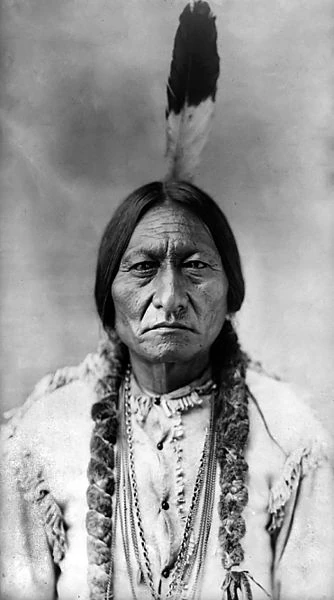


Aboriginal traditions do not clearly distinguish between what Western anthropology calls mythology, legend, and history. From the Indian point of view, the assessment of the emblematic figures of North America includes mythological figures such as Cuervo, Glúskap, Kokopelli and others, who are recognized as real people who provided important benefits to the people.
It is very difficult to limit the evaluation of leaders to those who have protected the integrity of natives from white attacks. All Aboriginal cultures have praised the wisdom, power, and courage of recent generations of elders, leaders, and sacred beings. The contribution of Aboriginal history to the existence of the natives has been virtually overcome because families and communities were exterminated during the European invasion. There are notable exceptions, such as that of Black Alce, a sacred oglala man who experienced both happiness and pain during the last years of freedom of the Plains Indians.
The most well-known indigenous figures are related to resistance leaders, who opposed European soldiers, settlers, and politicians and their successors in the United States. The descendants of warrior leaders such as Goyathlay (played by Jerome), Sitting Bull, and Chief Joseph and others their accomplishments, which were recorded in official documents and addressed by white journalists, writers and photographers. Most of this phenomenon occurred in the late 19th century, during the Indian Wars of the Plains. However, the first widely known native leader was Wahunsunacock or Powhatan, leader of the tribe of the same name in the early 17th century. After the English established a colony in Virginia in 1607, he established an alliance with the tribes on the southeastern coast and tried to maintain the integrity of his nation. The clever diplomat Powhatan allowed his daughter Pocahontas to marry John Rolfe, an Englishman. He took her to England, where the young woman, aged 21, died of virulence in 1617. Native leaders often realized that, despite following Western patterns, diplomacy was not effective in curbing European usurpation. John Ross, the leader of the Cherokee nation in the 1930s, tried to “civilize” his people in the eyes of white Americans, but was eventually forced to abandon their traditional territories due to the well-known Indian Removal Act of 1830. Ross successfully overturned the order before the Supreme Court, but the decision was ignored and he was part of the last group forced to move west in 1838. He worked hard during the following years to improve the situation of the Cherokee in his new home.
Many leaders, desperate for the loss of their homes and lands, resorted to armed resistance. In 1763, Ottawa leader Pontiac, who was also a great speaker, joined a powerful visionary known as the Delaware prophet and led the northeastern tribes, which included the Delawar, the Huron, the Seneca, and the Ojibwa, to fight against the British. Nearly 2,000 settlers lost their lives when strongholds and factories fell, and Pontiac and his troops besieged Fort Detroit for several months.
 Native American Cultures: Myths and magic
Native American Cultures: Myths and magic
You can purchase this book on Amazon.
This book challenges deep-seated stereotypes and offers an enriching perspective that contributes to a more comprehensive and respectful appreciation of the indigenous peoples of North America. Through an understanding of their myths and beliefs, we are taking an important step toward cultural reconciliation and the recognition of the diversity that has enriched the history of this continent.
These mythical stories, many of them linked to the literary genre of fantasy, reveal a world where the divine and the human intertwine in narratives that explain the cosmic order, creation, and the fundamental structure of the universe. Discover how these sacred tales bear witness to the deep connection of the natives with nature and spirituality.
Native Americans: Population and Territories
Native Americans: Cultures, customs, worldview
Traditions, myths, stories and legends